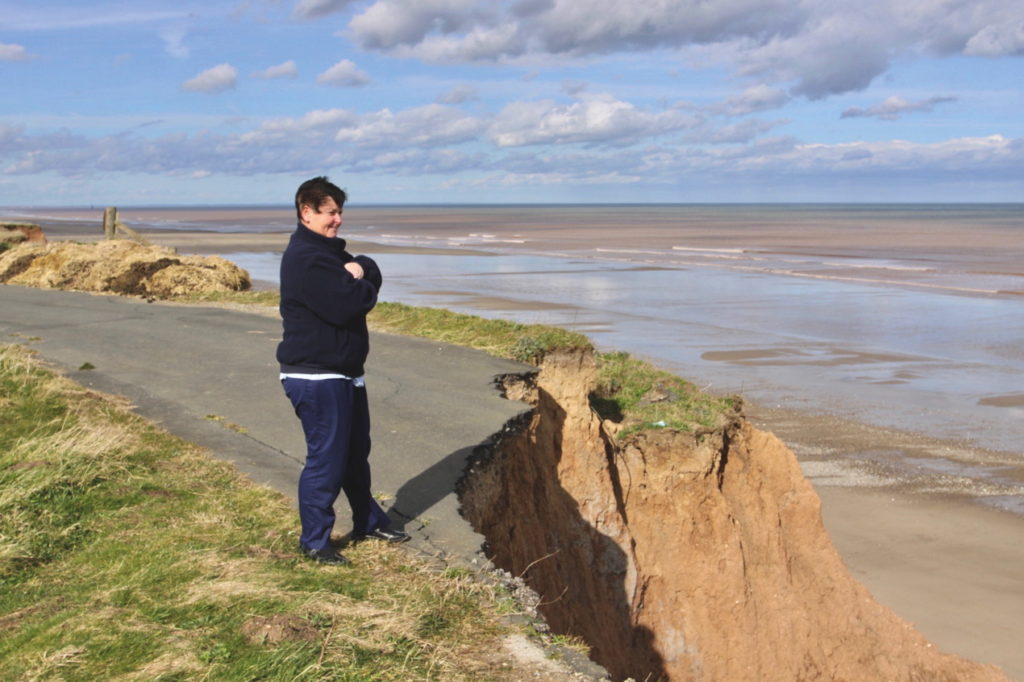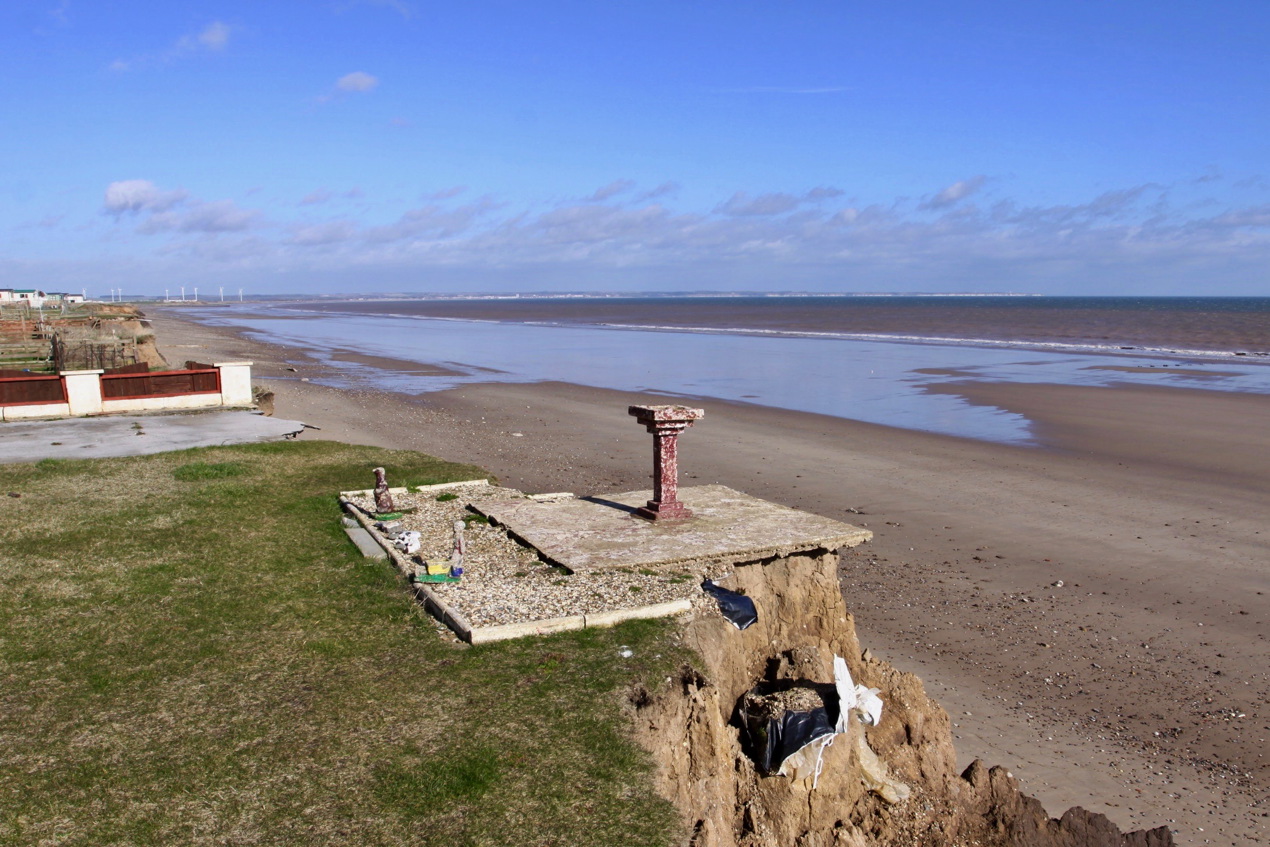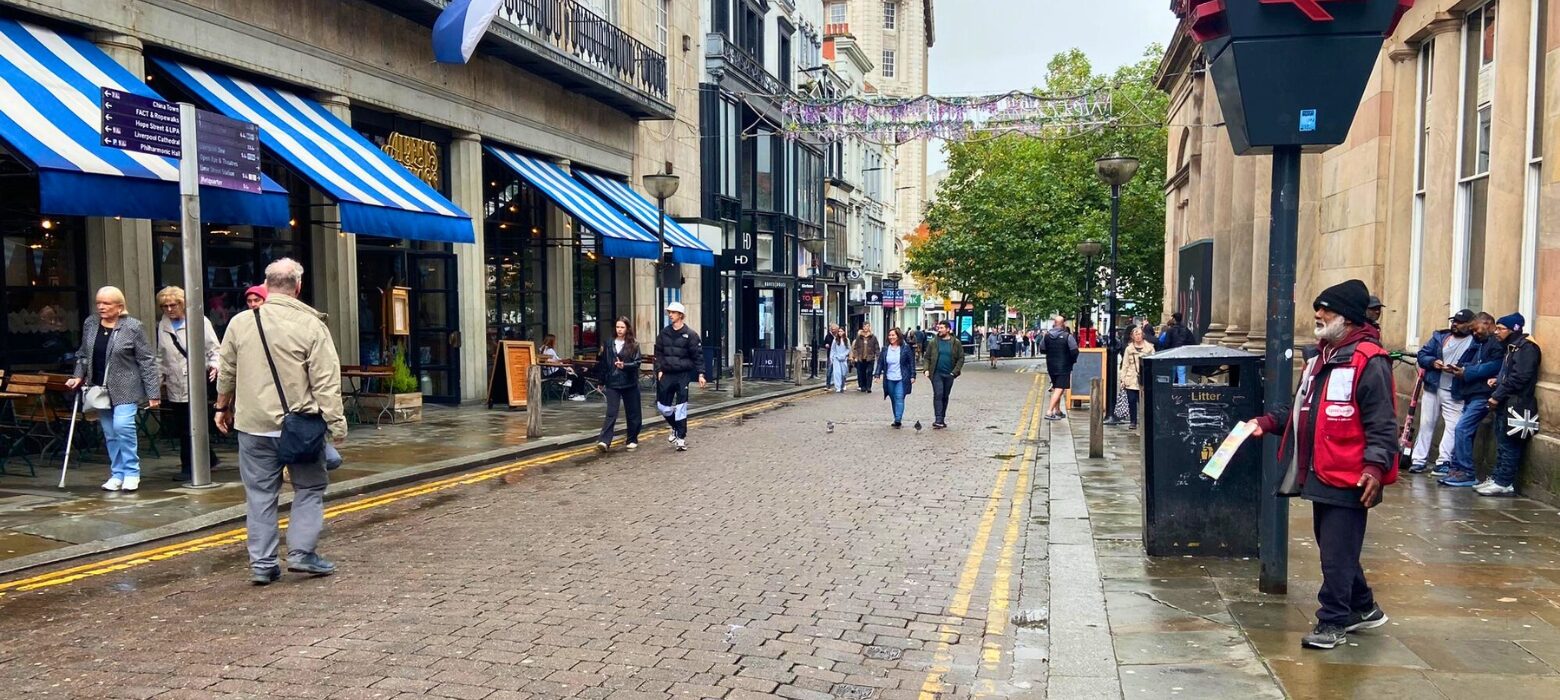Some locals swear that if you stand on the clifftop near Skipsea on the Yorkshire coast and listen very carefully you may be able to hear the muffled tolling of a bell out at sea. The sound comes not from an offshore buoy, they say, but from a church tower in the now submerged village of Cleeton.
Cleeton was an important community in the 11th century, according to the Domesday Book, but it was slowly swamped by waves. At least 30 other villages – perhaps as many as 40 – are thought to have been obliterated by what is officially recognised as Europe’s worst coastal erosion.
“When clay gets wet and the soil on top gets wet it just slumps and rolls into the sea.”
Early maps show that the fields and cliffs that now run south of Bridlington to meet the Humber at Spurn Point, washed twice daily by North Sea tides, were at one time more than three miles inland. The process is unstoppable in most places, according to Mike Elliott, professor of estuarine and coastal science at Hull University, and in the short term threatens to destroy hundreds of houses. Long term it could devastate larger communities further inland. He estimates that 1.5-2.5 metres of Yorkshire’s coast is being scoured away each year.
“This has been happening since the last Ice Age,” he says. “The glaciers came down this bit of coast and pushed a lot of clay towards the chalk hills of the Yorkshire Wolds. But when clay gets wet and the soil on top gets wet it just slumps and rolls into the sea.”
The list of East Yorkshire villages lost by this process includes long-forgotten names like Colden Parva, Ringborough, Monkwell, Sand-le-Mere, Waxholme, Dimlington and Ravenser Odd.
Historians know a fair amount about Ravenser Odd, which was established near the mouth of the Humber in the 13th century and within 50 years had over 100 houses and a flourishing market. So big did Ravenser Odd grow that it was granted a borough charter and was considered more important than Hull.
But by 1362 it had been destroyed, and the example of Ravenser Odd is now cited as a warning that all villages along this coast, no matter how big, are not safe from the waves.
People who live along what is called the Holderness coast know the score only too well. As far back as their memories can stretch they have watched the sea gradually get closer and closer and consume everything in its way.
Robin Waite, a farmer, stands on the shore near the village of Aldbrough between Hornsea and Withernsea and points about half a mile out to sea to a line separating blue seawater from the current of brown water that carries the clay silt that is constantly sucked away from the shore.
“I can remember when that line was where the cliff used to be,” he says. “There was an amusement arcade and a pub out there. But they have long gone. We’re told the land is eroding at a rate of two metres a year but most folk round here know that’s cobblers. It’s two or three times that amount in some places.”
Down the coast at the village of Tunstall, district nurse Annette Richards already knows that her redbrick Edwardian house won’t last much longer. She has obtained planning permission to build a new house further inland.
“We used to have caravans and a little bungalow in front of the house but now there’s nothing there and the seafront road is in the process of falling off the cliff. The best I can say about life is that I’ve got a great view of the sea.”
Some of the worst erosion is currently being seen at the village of Skipsea. In recent years the cliff has rolled right back to a street of 25 bungalows called Green Lane. One by one they are starting to be vacated and Peter Garforth, who lives at number 12, believes that he and his wife won’t be able to stay there much longer.
The experience of a neighbour makes him fearful for the future. “He was told to leave by the council and found a council house in Bridlington they said was disgusting,” says Garforth. “This wasn’t how I imagined things working out when we retired to live by the sea.”

Other residents speak of waking up in the middle of the night and feeling the house moving beneath the bed. Around three feet of the gardens behind the bungalows on Green Lane are said to have vanished in the past month alone.
William Taylor has a chalet in Skipsea Sands Holiday Park just behind Green Lane and has been told that when the clifftop eventually arrives at his door the chalets will be moved backwards into adjoining fields.
Standing where the seafront road has recently collapsed down onto the shore he points to a vacant piece of land. “That used to be the clubhouse for the holiday park,” he says. “But it’s been moved back. Rolling back everything looks like the name of the game along the coast. I was chatting to one of many people who have a chalet here who says that when he bought it a few years ago it stood on the fourth row back from the sea. Now he’s at the front.”
The bulk of Skipsea village, resident population 700 but augmented by at least another 300 in holiday chalets, is set almost a mile inland from Green Lane. Elliott says: “At Skipsea with the best will in the world those houses now threatened in Green Lane are not worth more than a few tens of thousands each. But the cost of protecting a piece of coast with sea defences currently runs at £2 million per 100 yards or so. I suppose if you really wanted to solve coastal erosion you’d concrete the whole coast, but government policy is to protect only urban areas like Hornsea and Withernsea, and places of national importance like the North Sea gas terminal at Easington, south of Withernsea.”
Indeed, East Riding District Council admits that it does a cost-benefit calculation to decide whether a beach is worth protecting. Since much of the Holderness coast comprises farmland and small villages or hamlets it concluded that the cost of building sea defences would be higher than the value of the at-risk land and properties.
The main grumble you hear from people whose homes are now threatened by the erosion is that building sea defences further up the coast has exacerbated the problem further south and put their properties in danger.
Elliott believes there is some truth in this. Defences built at the village of Mappleton, to the north of Aldbrough and Tunstall, are blamed for their increased erosion. It’s certainly the case, he says, that the dominant currents on the Yorkshire coast are going from north to south.
“If you build groynes on beaches to trap sediment and build up a beach as protection for one community, you starve the beaches of sediment further down the coast and create more erosion.”
In the early 2000s a pig farmer at the coastal village of Cowden tried to get compensation for the loss of his farm and house to erosion, claiming it had been caused by the sea defences built further up the coast at Appleton. His case was rejected by a land tribunal and a subsequent appeal was dismissed by the High Court.
“The nub is you are responsible for your house,” says Elliott. “Some people have actually tried putting in their own sea defences.
“There’s a householder who bought a few tons of boulders to put on the shore and protect his house. But it’s pretty futile. On some bits of coast there are these big anti-tank blocks left from World War Two, gigantic concrete cubes. Once you’ve seen the way the sea can toss around even these, you know a few rocks are not going to make any difference.”
Although the erosion problem is more acute on the Holderness coast than anywhere else, other areas are affected too. From the chalk cliffs of Flamborough Head just north of Bridlington right down the east coast of England and round to the White Cliffs of Dover the shoreline is slowly being devoured. An added complication is, says Elliott, that the same coast is gradually sinking, along with the tectonic plate on which it rests. A further problem, not faced by those villages that disappeared in the Middle Ages, is that the sea level is rising because of climate change.
Richards has certainly noticed the process accelerating at Tunstall. “We hadn’t seen much change for a while but then in the last few years we’ve had all these storm surges and lost a lot. The council told me that when the cliff’s 11 metres from the house it has to be demolished, so I’m hoping we at least get one last summer here.”







Leave a reply
Your email address will not be published.